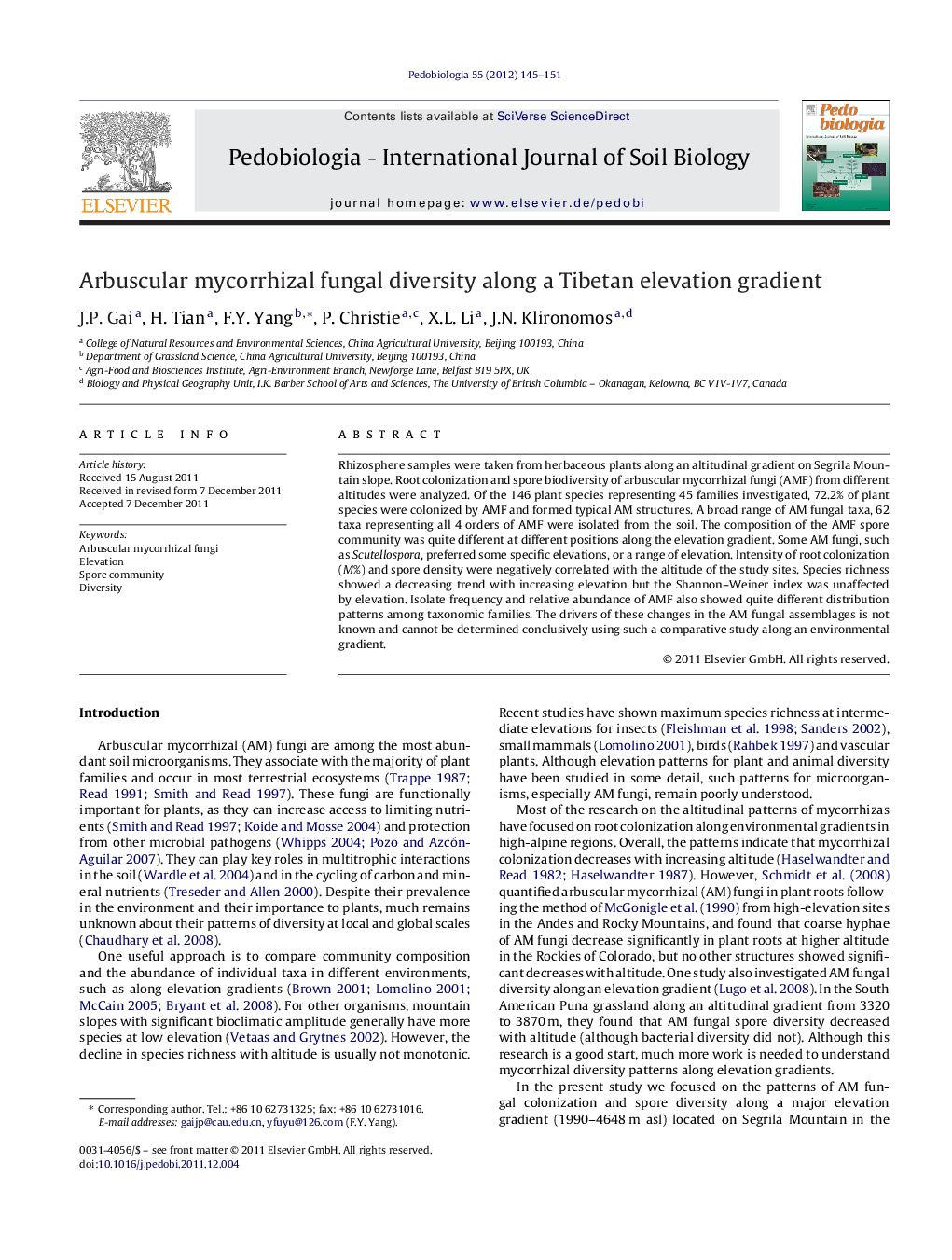| Article ID | Journal | Published Year | Pages | File Type |
|---|---|---|---|---|
| 2061213 | Pedobiologia | 2012 | 7 Pages |
Rhizosphere samples were taken from herbaceous plants along an altitudinal gradient on Segrila Mountain slope. Root colonization and spore biodiversity of arbuscular mycorrhizal fungi (AMF) from different altitudes were analyzed. Of the 146 plant species representing 45 families investigated, 72.2% of plant species were colonized by AMF and formed typical AM structures. A broad range of AM fungal taxa, 62 taxa representing all 4 orders of AMF were isolated from the soil. The composition of the AMF spore community was quite different at different positions along the elevation gradient. Some AM fungi, such as Scutellospora, preferred some specific elevations, or a range of elevation. Intensity of root colonization (M%) and spore density were negatively correlated with the altitude of the study sites. Species richness showed a decreasing trend with increasing elevation but the Shannon–Weiner index was unaffected by elevation. Isolate frequency and relative abundance of AMF also showed quite different distribution patterns among taxonomic families. The drivers of these changes in the AM fungal assemblages is not known and cannot be determined conclusively using such a comparative study along an environmental gradient.
